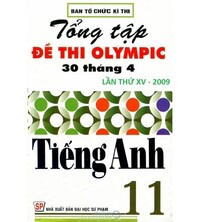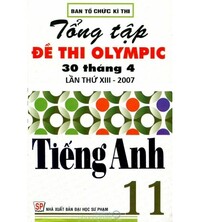8.3. Listening - Unit 8. Cities of the future - SBT Tiếng Anh 11 English Discovery
1. Match the pictures from A to E with names of different means of transport from 1 to 5. 2. Let's guess! Among different types of transport in Exercise 1, which ones are available for public use? Which ones are in the future?
Bài 1
1. Match the pictures from A to E with names of different means of transport from 1 to 5.
(Nối các hình ảnh từ A đến E với tên các phương tiện giao thông khác nhau từ 1 đến 5.)
1 automated helicopter
2 hyperloop
3 flying taxi
4 subway
5 driverless car

Phương pháp giải:
*Nghĩa của từ vựng
- automated helicopter: trực thăng tự động
- hyperloop: tàu điện từ
- flying taxi: taxi bay
- subway: tàu điện ngầm
- driverless car: xe không người lái
Lời giải chi tiết:

Bài 2
2. Let's guess! Among different types of transport in Exercise 1, which ones are available for public use? Which ones are in the future?
(Hãy đoán xem! Trong số các loại phương tiện giao thông khác nhau ở Bài tập 1, loại nào được sử dụng công cộng? Những cái nào trong tương lai?)
• Means of transport available for public use: ___________________________________
• Means of transport in the future: ___________________________________
Lời giải chi tiết:
• Means of transport available for public use: Subway, Driverless car
(Phương tiện công cộng có sẵn: Tàu điện ngầm, Xe không người lái)
• Means of transport in the future: Automated helicopter, Hyperloop, Flying taxi
(Phương tiện giao thông trong tương lai: Trực thăng tự động, Tàu điện từ, Taxi bay)
Bài 3
3. Listen to a talk show with a professor, Dr. Robert, about how people in metropolitan cities will travel in the next 50 years. Tick (✔) the five words you can listen to from the talk show and match with their definitions a-e.
(Nghe một chương trình trò chuyện với giáo sư, Tiến sĩ Robert, về cách người dân ở các thành phố đô thị sẽ đi lại trong 50 năm tới. Đánh dấu ( ✔) năm từ bạn có thể nghe từ chương trình trò chuyện và nối với định nghĩa của chúng từ a-e.)
1 ☐ sustainable
2 ☐ metropolitan
3 ☐ transform
4 ☐ infrastructure
5 ☐ innovations
6 ☐ monitor
7 ☐ high-speed
8 ☐ rush hour
a_____________: relating to a city and the densely populated surrounding areas
b_____________: to change the character or appearance of something in order to improve it
c_____________: the busy part of the day when towns and cities are crowded
d_____________: used to describe something that moves very quickly
e_____________: new ideas or methods
Phương pháp giải:
Bài nghe
Nick: Good morning. I'm Nick from CNN Discovery Channel. Joining me for our discussion is a technology professor, Doctor Robert.
Dr.Robert: Hello, Nick. Thank you for having me today.
Nick: Doctor Robert, how did you travel here this morning?
Dr.Robert: Well, I took the underground to get here.
Nick: Is the underground the most convenient means of transport in your city?
Dr.Robert: Yeah, kind of. But I have to say it's so crowded and sometimes you have to stand all the way home.
Nick: Yes, road congestion and air pollution still exist in such metropolitan cities as. New York, Mumbai, Shanghai, etc. With the unprecedented growth of population, what will future transportation in those cities look like?
Dr.Robert: Well, I believe that technological advances will transform our roads and skies; one of the future transport innovations is the development of underground roads, a system of tunnels will be built and vehicles will be lowered underground via elevators.
Nick: What a brilliant idea. Taking a taxi or driving a motorbike underground is supposed to be more weatherproof. No worries about rainy, sunny or snowy weather.
Dr.Robert: Yes, but it's still a plan.
Nick: I've also heard about maglev trains. Are they more convenient than traditional ones?
Dr.Robert: Yes, definitely. They are high - speed trains that can reach up to 600 kilometres per hour. Dr.Robert: They use power from Electro magnets to travel with less noise and less vibration. Maglev trains are not powered by fossil fuels, so they are better for the environment. Another means of future transport is flying cars.
Nick: What does a flying car look like?
Dr.Robert: It's not too big and doesn't use too much gas.
Nick: How about the speed?
Dr.Robert: It can reach 120 kilometers per hour on the ground and nearly 200 in the air. So owning a flying car will be a good idea to avoid traffic jams, especially during the rush hours.
Nick: Yeah. Thank you very much for spending time with us.
Tạm dịch
Nick: Chào buổi sáng. Tôi là Nick từ Kênh CNN Discovery. Tham gia cùng tôi trong cuộc thảo luận của chúng ta là giáo sư công nghệ, Tiến sĩ Robert.
Tiến sĩ Robert: Xin chào, Nick. Cảm ơn bạn đã có tôi ngày hôm nay.
Nick: Bác sĩ Robert, sáng nay ông đến đây bằng cách nào?
Tiến sĩ Robert: Tôi đã đi tàu điện ngầm để đến đây.
Nick: Tàu điện ngầm có phải là phương tiện giao thông thuận tiện nhất trong thành phố của bạn không?
Tiến sĩ Robert: Vâng, đại loại vậy. Nhưng phải nói là đông quá, có khi phải đứng suốt đường về.
Nick: Đúng vậy, tắc nghẽn giao thông và ô nhiễm không khí vẫn còn tồn tại ở các thành phố đô thị như. New York, Mumbai, Thượng Hải, v.v. Với sự gia tăng dân số chưa từng có, giao thông trong tương lai ở những thành phố đó sẽ như thế nào?
Tiến sĩ Robert: Tôi tin rằng những tiến bộ công nghệ sẽ biến đổi những con đường và bầu trời của chúng ta; Một trong những đổi mới về giao thông trong tương lai là phát triển đường ngầm, hệ thống đường hầm sẽ được xây dựng và các phương tiện sẽ được hạ xuống lòng đất bằng thang máy.
Nick: Thật là một ý tưởng tuyệt vời. Đi taxi hoặc lái xe máy dưới lòng đất được cho là sẽ chịu được thời tiết tốt hơn. Không cần lo lắng về thời tiết mưa, nắng hay tuyết.
Tiến sĩ Robert: Đúng, nhưng đó vẫn là một kế hoạch.
Nick: Tôi cũng đã nghe nói về tàu đệm từ. Chúng có tiện lợi hơn những cái truyền thống không?
Tiến sĩ Robert: Vâng, chắc chắn rồi. Chúng là những chuyến tàu tốc độ cao có thể đạt tốc độ lên tới 600 km một giờ. Tiến sĩ Robert: Họ sử dụng năng lượng từ nam châm Điện để di chuyển với ít tiếng ồn và ít rung động hơn. Tàu Maglev không chạy bằng nhiên liệu hóa thạch nên tốt hơn cho môi trường. Một phương tiện giao thông khác trong tương lai là ô tô bay.
Nick: Một chiếc ô tô bay trông như thế nào?
Tiến sĩ Robert: Nó không quá lớn và không tốn quá nhiều gas.
Nick: Còn tốc độ thì sao?
Tiến sĩ Robert: Nó có thể đạt tốc độ 120 km/h trên mặt đất và gần 200 km/h trên không. Vì vậy việc sở hữu một chiếc ô tô bay sẽ là một ý tưởng hay để tránh ùn tắc giao thông, đặc biệt là trong giờ cao điểm.
Nick: Ừ. Cảm ơn bạn rất nhiều vì đã dành thời gian với chúng tôi.
Lời giải chi tiết:
- Các từ được nhắc đến trong bài
2 ☑ metropolitan
3 ☑ transform
5 ☑ innovations
7 ☑ high-speed
8 ☑ rush hour
- Định nghĩa
a metropolitan: relating to a city and the densely populated surrounding areas
(đô thị: liên quan đến một thành phố và các khu vực đông dân cư xung quanh)
b transform: to change the character or appearance of something in order to improve it
(biến đổi: thay đổi đặc tính hoặc diện mạo của một cái gì đó để cải thiện nó)
c rush hour: the busy part of the day when towns and cities are crowded
(giờ cao điểm: khoảng thời gian bận rộn trong ngày khi các thị trấn, thành phố đông đúc)
d high-speed: used to describe something that moves very quickly
(tốc độ cao: được sử dụng để mô tả một cái gì đó di chuyển rất nhanh)
e innovations: new ideas or methods
(đổi mới: ý tưởng hoặc phương pháp mới)
Bài 4
4. Tick (✔) the main ideas discussed in the talk show.
(Đánh dấu ( ✔) những ý chính được thảo luận trong talkshow.)
1 ☐ The purpose of future transport
2 ☐ The type of energy needed to power future transport
3 ☐ The types of future transport
Lời giải chi tiết:
☑ The types of future transport
(Các loại phương tiện giao thông trong tương lai)
Bài 5
5. Listen again and complete the summary of the lecture with A WORD or A NUMBER from the talk show.
(Nghe lại và hoàn thành phần tóm tắt của bài giảng bằng MỘT TỪ hoặc SỐ từ talk show.)
Nowadays, with the blooming population, many big cities have to face two big issues: air pollution and road 1 _________
There are several types of transports used in the future to solve those issues. The first type is a system of 2 _________roadways. Cars, motorbikes and other private vehicles will be transported in the tunnels. This is 3 _________because whatever kinds of weather, people can commute to their destinations easily. The second type is maglev trains with the fastest speed 4 _________ km/h. Compared to traditional trains, they are much faster and have less noise and 5 _________. The last type of future transport is flying cars. On the ground, the speed can reach 120 km/h, but in the air it is approximately 6 _________ km/h.
Lời giải chi tiết:

Bài hoàn chỉnh
Nowadays, with the blooming population, many big cities have to face two big issues: air pollution and road 1 congestion
There are several types of transports used in the future to solve those issues. The first type is a system of 2 underground roadways. Cars, motorbikes and other private vehicles will be transported in the tunnels. This is 3 weatherproof because whatever kinds of weather, people can commute to their destinations easily. The second type is maglev trains with the fastest speed 4 600km/h. Compared to traditional trains, they are much faster and have less noise and 5 vibration. The last type of future transport is flying cars. On the ground, the speed can reach 120 km/h, but in the air it is approximately 6 200km/h.
Tạm dịch
Có một số loại phương tiện giao thông được sử dụng trong tương lai để giải quyết những vấn đề đó. Loại thứ nhất là hệ thống đường ngầm. Ô tô, xe máy và các phương tiện cá nhân khác sẽ được vận chuyển trong đường hầm. Điều này có khả năng chống chọi với thời tiết vì bất kể thời tiết như thế nào, mọi người đều có thể đi lại đến điểm đến một cách dễ dàng. Loại thứ hai là tàu đệm từ có tốc độ nhanh nhất 600 km/h. So với tàu truyền thống, chúng nhanh hơn nhiều, ít tiếng ồn và độ rung hơn. Loại phương tiện giao thông cuối cùng trong tương lai là ô tô bay. Trên mặt đất, tốc độ có thể đạt tới 120 km/h, nhưng trên không là khoảng 200 km/h.
Bài 6
6. What means of transport mentioned in the talk show will become real in your city in 50 years from now? Guess and explain.
(Phương tiện giao thông nào được đề cập trong talk show sẽ trở thành hiện thực ở thành phố của bạn sau 50 năm nữa? Hãy đoán và giải thích.)
Lời giải chi tiết:
Based on the information provided in the talk show, it is likely that the system of underground roadways could become a reality in Ho Chi Minh City in 50 years from now. The talk show mentioned that this innovation involves building tunnels for cars, motorbikes, and private vehicles to travel underground. Given the potential benefits, such as alleviating road congestion and providing a weatherproof means of transportation, it is plausible that a city like Ho Chi Minh, which is known for its dense population and traffic challenges, might invest in and implement such a system in the future. However, it's important to note that this is speculative and would depend on various factors, including technological advancements, urban planning, and investment priorities over the next 50 years.
(Dựa trên những thông tin được cung cấp trong buổi tọa đàm, rất có thể hệ thống đường ngầm sẽ trở thành hiện thực ở TP.HCM sau 50 năm nữa. Chương trình trò chuyện đề cập rằng sự đổi mới này liên quan đến việc xây dựng đường hầm cho ô tô, xe máy và phương tiện cá nhân di chuyển dưới lòng đất. Với những lợi ích tiềm năng, chẳng hạn như giảm bớt tắc nghẽn đường bộ và cung cấp phương tiện giao thông chịu được thời tiết, thật hợp lý khi một thành phố như Hồ Chí Minh, nơi nổi tiếng với mật độ dân số dày đặc và những thách thức giao thông, có thể đầu tư và triển khai một hệ thống như vậy ở tương lai. Tuy nhiên, điều quan trọng cần lưu ý là đây chỉ là suy đoán và sẽ phụ thuộc vào nhiều yếu tố khác nhau, bao gồm tiến bộ công nghệ, quy hoạch đô thị và ưu tiên đầu tư trong 50 năm tới.)
Search google: "từ khóa + timdapan.com" Ví dụ: "8.3. Listening - Unit 8. Cities of the future - SBT Tiếng Anh 11 English Discovery timdapan.com"







